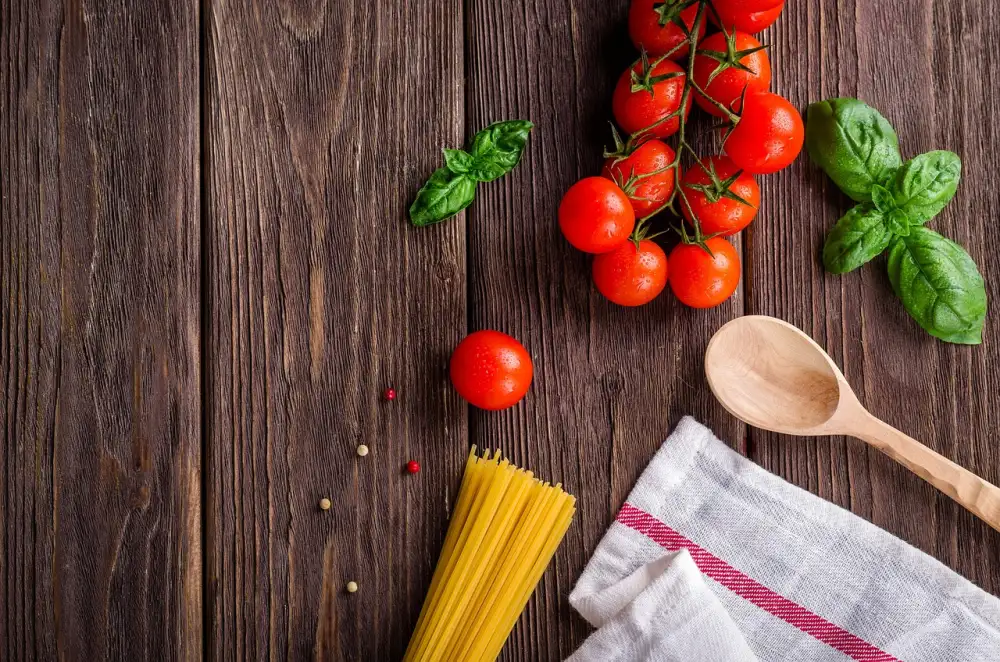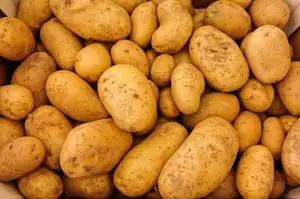Master the Art of Making Homemade Pasta: A Step-by-Step Guide to Elevate Your Food Game

There's something truly magical about homemade pasta. The taste, the texture, the satisfaction of creating something from scratch - it's a culinary experience like no other. Whether you're a seasoned chef or just starting out in the kitchen, mastering the art of making homemade pasta is sure to elevate your food game. In this step-by-step guide, we'll take you through the process of creating delicious pasta right in your own home. Get ready to impress your friends and family with your newfound pasta-making skills!
Gather the Ingredients
To make homemade pasta, you will need a few simple ingredients that you probably already have in your kitchen. The basic ingredients for pasta dough include all-purpose flour, eggs, and salt. For a more flavorful variation, you can also add olive oil or semolina flour to the mix. Make sure to use fresh eggs for the best results. It's important to note that the quality of your ingredients will greatly affect the taste and texture of your pasta, so always opt for high-quality products when possible. Once you have gathered all the necessary ingredients, you are ready to move on to the next step: preparing the pasta dough.
Prepare the Pasta Dough
To prepare the pasta dough, you will need a few simple ingredients: all-purpose flour, eggs, and salt. Start by measuring out 2 cups of flour and placing it on a clean surface or in a large mixing bowl. Create a well in the center of the flour and crack 3 eggs into it. Sprinkle in 1/2 teaspoon of salt. Using a fork, gently beat the eggs and gradually incorporate the surrounding flour until a loose, shaggy dough forms. If the dough feels too dry, add a little water; if it's too sticky, add more flour. Once the dough starts to come together, use your hands to knead it gently until it becomes smooth and elastic. This process should take about 5-7 minutes. Remember not to overwork the dough as this can result in tough pasta. Once you've achieved the desired consistency, shape the dough into a ball and wrap it tightly in plastic wrap. Let it rest at room temperature for at least 30 minutes to allow the gluten to relax and make rolling out easier later on.
Knead the Dough
Once you have prepared the pasta dough, it's time to knead it. Kneading is a crucial step in developing the gluten, which gives the pasta its desired texture and elasticity.
To begin, lightly flour your work surface to prevent the dough from sticking. Place the dough on the floured surface and use your hands to push it away from you, folding it over itself. Rotate the dough a quarter turn and repeat this motion.
Continue kneading for about 8-10 minutes until the dough becomes smooth and elastic. If the dough feels too sticky, add a little more flour. Conversely, if it feels too dry, sprinkle some water onto it.
Remember to use firm pressure while kneading but be careful not to overwork the dough as this can make it tough. The goal is to achieve a soft and pliable consistency.
Once you are satisfied with the texture of the dough, shape it into a ball and cover it with a clean kitchen towel or plastic wrap. Let it rest for at least 30 minutes. This resting period allows the gluten to relax, making it easier to roll out later.
Kneading may require some practice, but don't be discouraged if you don't get it perfect right away. With time and experience, you'll develop a feel for when the dough is ready.
Now that your pasta dough has been properly kneaded and rested, you're ready to move on to rolling out the dough.
Rest the Dough
Resting the dough is a crucial step in the pasta-making process. After kneading the dough, it needs time to relax and develop its gluten structure. This rest period allows the dough to become more elastic and easier to work with.
To rest the dough, cover it with a clean kitchen towel or plastic wrap and let it sit at room temperature for about 30 minutes. This resting time allows the gluten strands to relax, making the dough less likely to shrink or tear when rolled out.
During this resting period, you can use this time to prepare your desired sauce or toppings for your pasta dish. It's also a good opportunity to clean up your workspace and gather any additional equipment you may need.
Remember not to skip this step as it greatly affects the texture and taste of your homemade pasta. The rest period ensures that your pasta will have a tender yet firm bite when cooked.
Once the dough has rested, it's ready to be rolled out into thin sheets using a rolling pin or pasta machine. The rested dough will be more pliable and easier to handle, resulting in smoother and more uniform pasta shapes.
So take this time to relax yourself as well while your homemade pasta dough rests. It's an essential part of mastering the art of making homemade pasta and will elevate your food game to new heights.
Roll out the Dough
Rolling out the dough is a crucial step in making homemade pasta. After allowing the dough to rest, lightly flour your work surface and divide the dough into smaller portions. Take one portion and flatten it with your hands to create a rough rectangle shape. Using a rolling pin, start from the center of the dough and roll outward, applying even pressure as you go. Flip the dough occasionally and continue rolling until you achieve a thin, uniform sheet. If the dough sticks to the surface, sprinkle more flour underneath. Repeat this process with the remaining portions of dough. Remember to work quickly to prevent drying out.
Cut the Pasta
Once you have rolled out your pasta dough to the desired thickness, it's time to cut it into the shape you desire. There are various options for cutting pasta, depending on the type of dish you plan to make. For long pasta like spaghetti or fettuccine, you can use a pasta machine with a cutting attachment or a sharp knife. Simply feed the rolled-out dough through the machine or carefully slice it into thin strips.
If you prefer shorter shapes like penne or farfalle, you can use a fluted pastry wheel or a pizza cutter to cut small squares or rectangles. To make ravioli or tortellini, use a round cookie cutter or glass to cut out circles from the rolled-out dough. Place your desired filling in the center of each circle and fold them over to seal.
Remember to lightly dust your freshly cut pasta with flour to prevent sticking. Once cut, gently shake off any excess flour before cooking. Cutting homemade pasta allows for endless creativity and customization in your dishes. Experiment with different shapes and sizes to elevate your culinary creations.
Stay tuned for the next step: "Cook the Pasta," where we will explore various cooking methods and tips to ensure perfectly cooked homemade pasta every time!
Cook the Pasta
Once your homemade pasta is cut into the desired shape, it's time to cook it to perfection. Fill a large pot with water and bring it to a rolling boil. Add a generous amount of salt to the boiling water - this will enhance the flavor of the pasta.
Gently drop the pasta into the boiling water and give it a gentle stir to prevent sticking. Cooking times may vary depending on the thickness and shape of your pasta, so refer to the package instructions as a general guideline.
Fresh homemade pasta cooks much faster than store-bought dried pasta, usually within 1-3 minutes. Keep an eye on it and taste for doneness. The pasta should be al dente, meaning it still has a slight bite to it.
Once cooked, carefully drain the pasta using a colander or slotted spoon. Avoid rinsing it with cold water as this will remove the starches that help sauce cling to the noodles.
Now your perfectly cooked homemade pasta is ready to be paired with your favorite sauce or toppings. Toss it in a luscious tomato sauce, creamy Alfredo, or simply drizzle with olive oil and sprinkle some grated Parmesan cheese.
Remember, homemade pasta absorbs sauces more readily than dried pasta, so make sure you have enough sauce to coat every strand. Serve immediately while still hot for maximum enjoyment.
By following these steps, you can elevate your food game by mastering the art of making homemade pasta. Experiment with different flavors and shapes, and soon you'll be impressing friends and family with your culinary skills. Enjoy!
Serve and Enjoy
Once your homemade pasta is cooked to perfection, it's time to savor the fruits of your labor. Drain the pasta well and transfer it to a serving dish. You can keep it simple by tossing the pasta with a drizzle of olive oil or melted butter, or you can get creative with a variety of sauces.
Classic options like marinara, alfredo, or pesto are always crowd-pleasers. Alternatively, you can experiment with different flavors by trying out homemade tomato cream sauce, lemon garlic butter sauce, or even a spicy arrabbiata sauce.
Don't forget to garnish your pasta dish with freshly grated Parmesan cheese and chopped herbs like basil or parsley for an added burst of flavor and visual appeal.
To take your meal to the next level, consider pairing your homemade pasta with a side salad or some crusty bread. A glass of wine or a refreshing beverage will perfectly complement the flavors on your plate.
As you sit down to enjoy your delicious creation, take pride in knowing that you have mastered the art of making homemade pasta. The effort and love put into each step have undoubtedly elevated your food game and will impress anyone lucky enough to taste it.
So go ahead, serve up a plateful of happiness and relish in the satisfaction that comes from creating something truly special in your own kitchen. Bon appétit!
In conclusion, mastering the art of making homemade pasta is a rewarding and delicious endeavor. By following these step-by-step instructions, you can elevate your food game and impress your family and friends with your culinary skills.
Here are some final tips to ensure success:
1. Experiment with different types of flour: Try using semolina flour or whole wheat flour for added flavor and texture.
2. Don't rush the process: Take your time when kneading and rolling out the dough. This will result in a more tender and elastic pasta.
3. Use a pasta machine if possible: While it's not necessary, a pasta machine can make the rolling process easier and more consistent.
4. Don't forget to salt the cooking water: Adding salt to the boiling water will enhance the flavor of the pasta.
5. Cook the pasta al dente: This means that it should still have a slight bite to it when cooked. Avoid overcooking as it can make the pasta mushy.
Remember, practice makes perfect! Don't be discouraged if your first attempt isn't flawless. With time and experience, you'll become a master at making homemade pasta. So gather your ingredients, roll up your sleeves, and let your creativity shine in the kitchen!
Published: 17. 11. 2023
Category: Food



